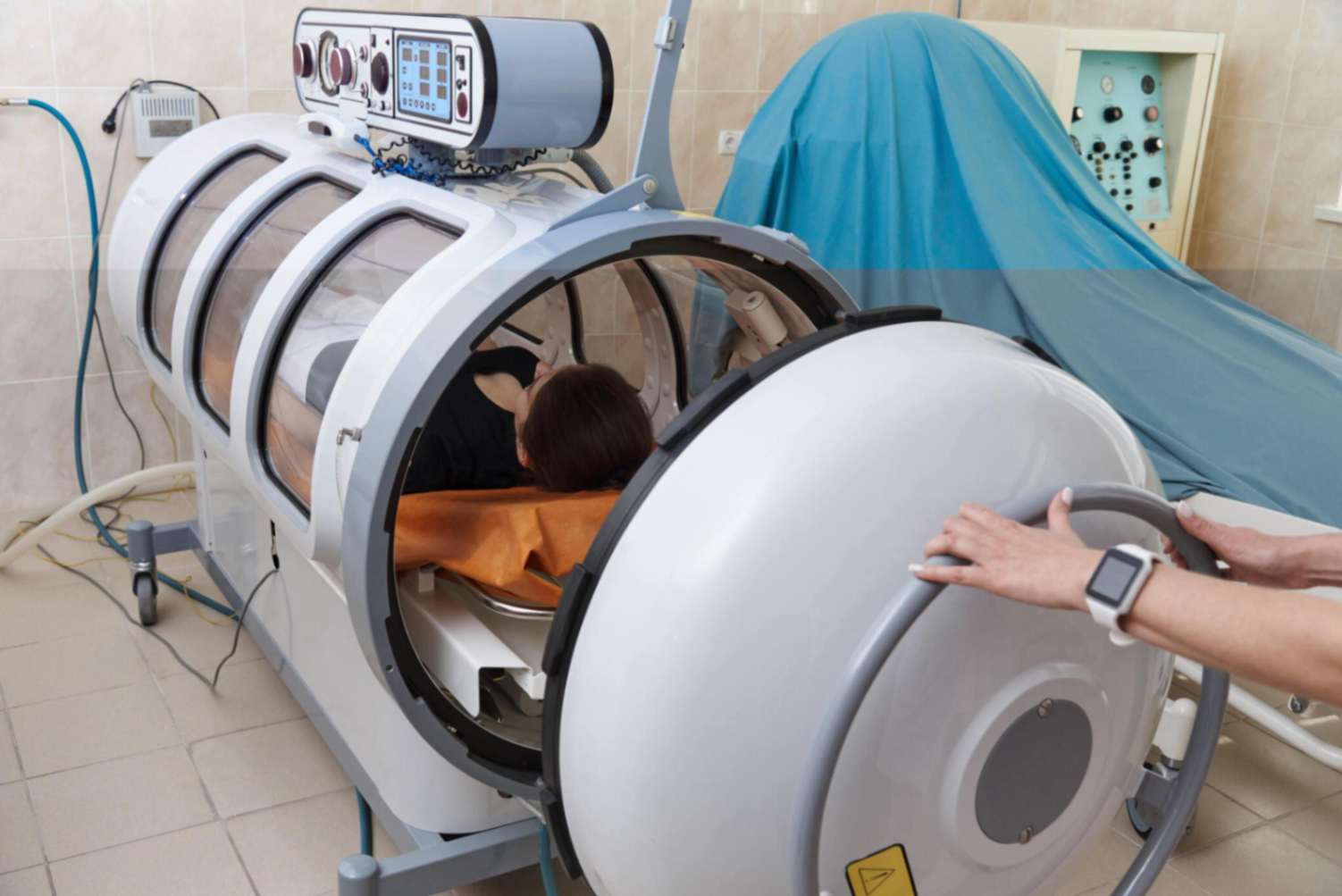Hyperbaric Oxygen Therapy (HBOT) has long been recognized for its efficacy in accelerating wound healing, particularly in patients with diabetes, infections, or those recovering from radiation therapy. However, the scope of HBOT’s benefits extends far beyond wound care.
Recent research reveals its potential to improve cognitive function, aid in the treatment of certain neurological conditions, and even enhance longevity and overall wellness.
This article delves into these unexpected benefits, shedding light on the versatility of HBOT and its promising applications in various aspects of health and medicine.
Cognitive Function and Brain Health
Hyperbaric oxygen therapy enhances cognitive functions by increasing brain oxygen levels, stimulating neuroplasticity, and potentially improving memory, attention, and executive functions, offering a promising approach to brain health and recovery.
1. Boosting Cognitive Abilities
Studies have indicated that HBOT can improve cognitive functions, such as memory, attention, and executive function. The mechanism behind this improvement is believed to be the increased oxygen levels in the brain, which stimulate neuroplasticity.
Neuroplasticity refers to the brain’s ability to form new neural connections, essentially allowing the brain to rewire itself. This process is crucial for learning new skills and recovering from brain injuries.
2. Treatment of Neurological Conditions
HBOT has shown promise in the treatment of stroke victims, individuals with traumatic brain injuries (TBI), and even those with mild cognitive impairments.
By enhancing the oxygen supply to damaged areas of the brain, HBOT can promote healing and functional recovery.
Patients with TBI, for instance, have reported improvements in symptoms such as headache, dizziness, and cognitive difficulties following HBOT sessions.
Mental Health Improvements
Hyperbaric oxygen therapy may alleviate symptoms of depression and anxiety by increasing brain oxygenation, which could have an anti-inflammatory effect, offering a complementary approach to traditional mental health treatments.
Alleviating symptoms of depression and anxiety in treating mental health issues, including depression and anxiety, is an area of growing interest. The theory is that the increased oxygenation could have an anti-inflammatory effect on the brain, thus reducing symptoms associated with these conditions.
While research in this area is still emerging, early findings suggest that HBOT may offer a complementary approach to traditional mental health treatments.
Enhancing Longevity and Wellness
This therapy promotes longevity and wellness by stimulating stem cell production and antioxidants, aiding in cell repair, delaying aging, and enhancing physical and cognitive functions for a better quality of life.
1. Anti-aging Effects
One of the most intriguing potential benefits of HBOT is its capacity to promote longevity and combat the aging process. Research suggests that HBOT can stimulate the production of stem cells and antioxidants, which are vital in repairing damaged cells and tissues in the body.
This regenerative effect not only helps in delaying the aging process but also improves the quality of life by enhancing physical and cognitive functions.
2. Improving Fitness and Physical Performance
Athletes and fitness enthusiasts might find HBOT particularly beneficial, not just for recovery from injuries but also for enhancing physical performance.
By improving tissue oxygenation, HBOT can enhance muscle endurance and strength, reduce fatigue, and shorten recovery times between intense training sessions.
Neurological Conditions and Recovery
This therapy aids recovery from neurological conditions like stroke and traumatic brain injuries by increasing oxygen to the brain, enhancing healing, and potentially improving mobility and cognitive functions.
1. Aid in Recovery from Stroke and Neurological Injuries
HBOT’s ability to increase oxygen delivery to the brain can significantly benefit stroke survivors and individuals with neurological injuries. The therapy has been reported to enhance the recovery process, helping patients regain mobility and improve their overall quality of life.
The potential for HBOT to repair brain tissue and restore function makes it a valuable tool in neurorehabilitation programs.
2. Potential in Treating Autism Spectrum Disorder (ASD)
Preliminary studies have explored the use of HBOT in treating ASD, with some parents and clinicians reporting improvements in behavior, language, and social interaction.
While the scientific community remains cautious and research is ongoing, these early findings open up new avenues for exploring HBOT’s role in managing ASD.
Applications in Chronic Conditions Management
It offers new avenues for managing chronic conditions such as fibromyalgia and diabetes by improving oxygenation, reducing inflammation, and enhancing overall bodily functions and healing processes.
1. Mitigating Effects of Chronic Fatigue Syndrome (CFS) and Fibromyalgia
Emerging research points to HBOT’s potential in alleviating symptoms associated with chronic conditions like chronic fatigue syndrome and fibromyalgia.
These conditions, characterized by widespread pain, sleep abnormalities, fatigue, and often emotional distress, have been challenging to treat with conventional medicine alone.
HBOT, by enhancing oxygen flow to tissues and reducing inflammation, offers a novel approach that may improve patients’ quality of life by diminishing pain, enhancing energy levels, and promoting better sleep patterns.
2. Role in Managing Diabetes Complications
Diabetes patients often struggle with wound healing due to impaired blood flow and oxygenation to the extremities.
Beyond the direct application of HBOT in healing diabetic foot ulcers, there is growing evidence suggesting that regular HBOT sessions may improve broader complications associated with diabetes, such as reducing the risk of peripheral neuropathy and potentially enhancing insulin sensitivity, thereby offering a multi-faceted approach to diabetes management.
HBOT and Immune System Enhancement
This therapy boosts the immune system by enhancing the efficiency of white blood cells, improving infection resistance, and reducing inflammation, leading to a stronger and more responsive immune defense.
1. Strengthening Immune Response
HBOT’s ability to super-saturate tissues with oxygen has positive implications for the immune system. Enhanced oxygen levels can boost the efficiency of white blood cells, improving the body’s ability to fight infections and kill bacteria.
2. Potential in Cancer Support Therapy
While HBOT should not be considered a stand-alone cancer treatment, some research indicates that it may play a supportive role in conjunction with traditional cancer treatments.
By improving oxygenation, HBOT may enhance the effectiveness of certain chemotherapy drugs and radiation therapy by making cancer cells more susceptible to treatment.
Integrative Approaches and Personalized Medicine
Integrative approaches and personalized medicine tailor Hyperbaric Oxygen Therapy to individual health needs, optimizing treatment effectiveness while considering holistic health practices for comprehensive well-being and enhanced recovery outcomes.
1. Tailoring HBOT Protocols
The future of HBOT lies in personalized medicine, where treatment protocols are tailored to the individual needs of the patient. By considering factors such as the specific condition being treated, its severity, and the patient’s overall health status, healthcare providers can optimize HBOT schedules for maximum effectiveness.
Personalized protocols ensure that patients receive the right amount of therapy at the right intervals, maximizing the therapy’s benefits while minimizing any potential risks.
2. Integrating HBOT with Holistic Health Practices
As awareness of HBOT’s benefits grows, there’s an increasing trend toward integrating it with other holistic health practices such as nutrition, physical therapy, and stress management techniques.
This integrative approach not only enhances the effectiveness of HBOT but also supports a comprehensive wellness strategy, addressing the physical, mental, and emotional aspects of health to promote overall well-being.
Conclusion
Hyperbaric oxygen therapy is breaking new ground beyond its traditional applications, offering hope and improved outcomes for patients facing a wide range of health challenges.
From enhancing cognitive function and mental health to supporting the management of chronic conditions and bolstering the immune system, the potential benefits of HBOT are vast.
As research continues to advance, and as personalized and integrative health practices evolve, HBOT is poised to play an increasingly significant role in healthcare, offering a breath of fresh air to patients seeking alternative and supportive therapies.












